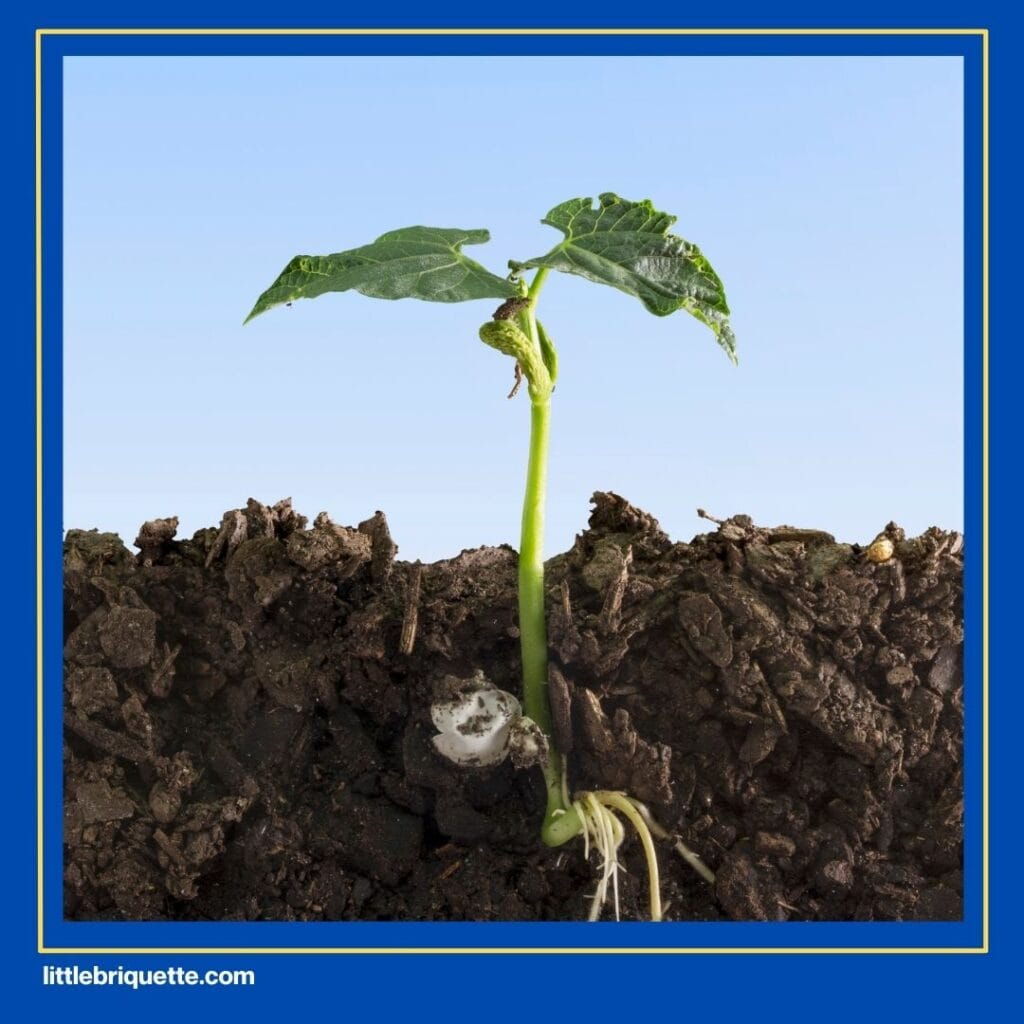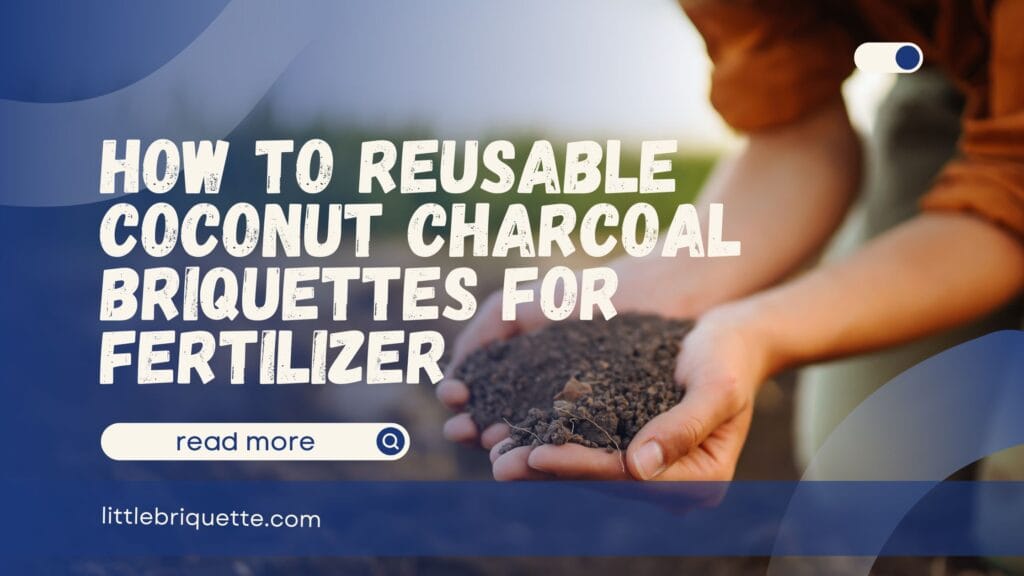Amidst the growing awareness of the importance of environmental sustainability, reusable coconut charcoal briquettes have emerged as a smart solution to reduce waste and enrich soil fertility. Coconut charcoal briquettes, made from coconut by-products, not only possess environmentally friendly properties but also have remarkable abilities to improve soil structure and retain moisture.
Reusing coconut charcoal briquettes as fertilizer is a brilliant idea, as it not only supports healthier plant growth but also helps maintain ecosystem balance. By utilizing existing materials, we can contribute to more sustainable agricultural practices and reduce reliance on chemical fertilizers. Here’s how to reuse coconut charcoal briquettes for fertilizer.
Benefits of Coconut Charcoal Briquettes as Fertilizer
A suitable way to reuse coconut charcoal briquettes is to use them as fertilizer because they have the ability to enhance soil fertility and structure. Here are the benefits of using coconut charcoal briquettes as fertilizer:
Soil Health

Coconut charcoal briquettes can improve soil health by enhancing soil structure and aeration. When these briquettes are added to the soil, they help create better air spaces, which are crucial for gas exchange between plant roots and the surrounding environment. Good soil structure allows roots to grow more freely, increasing plants’ access to the oxygen and nutrients needed for optimal growth. By improving aeration, coconut charcoal briquettes also help prevent issues like soil compaction, which can hinder plant growth.
Additionally, reusable coconut charcoal briquettes, which are lightweight and porous, can aid in moisture retention. Soil with good structure can hold water longer, thereby reducing the need for excessive watering. Thus, the use of these briquettes not only benefits plants but also aids in water conservation, which is increasingly important in the era of climate change. The overall improvement in soil health contributes to the sustainability of agricultural and gardening practices.
Reusable Coconut Charcoal Briquettes for Nutrient Retention in Soil

One of the advantages of reusable coconut charcoal briquettes is their ability to retain moisture and nutrients. These briquettes have a high capacity for absorbing water, allowing the soil to remain moist for longer, especially during hot weather or drought periods. This retained moisture helps plants during water stress, supporting better growth and reducing the risk of wilting. By incorporating coconut charcoal briquettes into the growing medium, farmers and gardeners can create a more stable environment for their plants.
In addition to retaining water, coconut charcoal briquettes also function as nutrient reservoirs. They can absorb and gradually release nutrients, providing a consistent supply to plants. The nutrients absorbed by the briquettes can include nitrogen, phosphorus, and potassium, which are essential for plant growth. In this way, coconut charcoal briquettes not only enhance nutrient availability but also reduce the risk of nutrient leaching from the soil, which leads to issues in traditional agricultural environments.
Microbiological Activity

Coconut charcoal briquettes play a crucial role in supporting microbiological activity in the soil. Microbes, such as bacteria and fungi, are vital for decomposition processes and nutrient cycling within the soil ecosystem. By adding coconut charcoal briquettes, we create an ideal habitat for these microbes to thrive. The porous structure of the briquettes allows microbes to move and interact with the surrounding organic matter, enhancing the efficiency of decomposition processes. As a result, the nutrients contained in organic matter can be released more effectively and made available to plants.
Furthermore, the presence of beneficial microbes in the soil can help improve plants’ resistance to diseases. Healthy microbes can compete with pathogens, preventing them from taking over the space and resources needed by plants. In this way, coconut charcoal briquettes not only support plant growth by increasing nutrient availability but also contribute to overall soil health. By enhancing the microbiological balance, we can create a more sustainable and productive agricultural ecosystem.
Read Also: Strategies for Reusing Charcoal Briquettes to Reduce Waste
Preparation of Reusable Coconut Charcoal Briquettes
To prepare the reusable coconut charcoal briquettes, the first step is to clean them after use. First, allow the briquettes to cool completely before handling. Then, scrub the surface of the briquettes to remove any food residues or dirt that may be stuck, using a brush or damp cloth if necessary. After that, rinse the briquettes with clean water and let them dry before storing.
Next, to test the effectiveness of the briquettes, break them into small pieces and check the ash content; good briquettes should have little ash and remain porous. If the briquettes crumble easily and maintain a rich color, this indicates that they can still be used as fertilizer. This way, you can ensure that the reused coconut charcoal briquettes continue to provide maximum benefits to the soil and plants.
Application Methods for Reusable Coconut Charcoal Briquettes
Reusable coconut charcoal briquettes can be used as fertilizer in three ways: mixing with compost, direct application, and creating a fertilizer blend. Here are the application methods that can be done:
Mixing with Compost

To integrate coconut charcoal briquettes into a compost pile, follow these steps:
- Ensure the coconut charcoal briquettes are clean and dry, then cut or crush the briquettes into smaller sizes for easier mixing.
- Mix the briquettes into the compost pile at a ratio of approximately 1:4 (one part briquettes to four parts organic material).
- Stir thoroughly so that the briquettes can absorb moisture and nutrients from the other compost materials.
This process not only enhances the quality of the compost but also helps improve water retention and aeration as the compost matures and is ready for use.
Direct Application

Using the direct application method with reusable coconut charcoal briquettes as fertilizer will help enhance soil aeration and moisture retention, as well as support root growth and overall plant health. Here are the steps:
- Cut the briquettes into small pieces while they are clean and dry.
- Evenly spread the briquettes over the area you want to improve, with a thickness of about 1-2 cm.
- After that, mix them into the soil using a rake or shovel to help the briquettes integrate more quickly with the growing medium.
Creating a Fertilizer Blend

For optimal results, coconut charcoal briquettes can be combined with other organic materials such as manure, compost, or plant residues. This mixture can be made by combining one part briquettes with one part organic fertilizer and one part compost. Mix all the ingredients thoroughly, then apply this mixture to the soil before planting or around existing plants. This combination not only provides the necessary moisture and nutrients but also creates an environment that supports beneficial microbes, improving soil quality and encouraging healthy plant growth.
Read Also: How Many Briquettes Are Used for Cooking?
Buying Quality Coconut Charcoal Briquettes
To achieve optimal results and fertile soil, it’s essential to choose high-quality coconut charcoal briquettes. You can obtain quality briquettes by purchasing from Little Briquette, a trusted supplier that even ships to Saudi Arabia. Contact the admin number here to get coconut charcoal briquettes in bulk at affordable prices.

